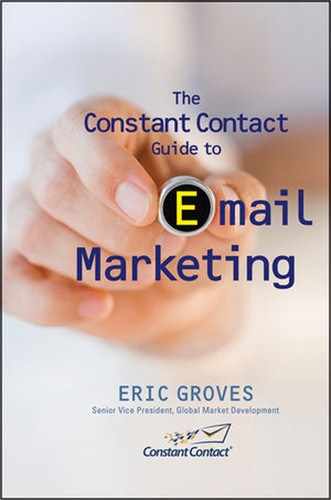Email Frequency and Length: Do I Have Time?
The final question your recipients ask prior to diving into your communications is whether they have time to read what you have to say. Have you ever had a relationship with someone who would just not stop talking? It’s exhausting. Relationships need time to develop, and each positive interaction provides an opportunity for the person at the other end of the relationship to respond. Overcommunicating via email can have a negative impact on the trust you build with your customers. So, if you set their expectations to be hearing from you on a monthly basis, stick to it. If you don’t, your recipients will eventually lose interest, ignore your communications, and eventually unsubscribe.
The best reputation you can have is for delivering interesting and engaging content that can be read in less than 1 minute. If you are known to ramble on or provide way too much content, then your readers will tend to read your content less often or tell themselves that they will get back to it at a later date. When it comes to email, people rarely come back to something unless the value they receive is significant.
Absence does not make the heart grow fonder when it comes to email marketing. You need to maintain contact with your recipients at least quarterly in order for your relationship to continue to grow. If you fall short of delivering at least quarterly, your recipients will start to forget that they gave you permission to contact them. We like to say that permission is perishable, and you need to stay in touch in order to keep it fresh.
You’re communicating to build a relationship, and if you let too much time pass between communications, you also run the risk of your customer forgetting you and turning to someone else. It always amazes me when I hear stories from customers who say that when they send an email campaign the phone rings. At the other end of the phone is typically someone who says, “I am so glad that I got your email, I needed you last week and the email triggered my memory that you do what we need.” Your email communications are like reaching out and flicking your customers on the forehead and saying, “Remember me?”
I have worked with some nonprofits to help them understand that communicating once a year when you need to raise funds is not enough. While you may have one or two big fundraising periods, you need to spend the rest of the year sharing the great things that your organization does with the money you raised. The more you communicate the benefits of what you provide, the easier it will be to collect funds the next time around.
When at all possible, set the recipients’ expectations for how often and what you will be communicating. I suggest including it in the signup process, in the welcome email, in your campaigns, and on your archive page as follows.
SIGN-UP PROCESS AND WELCOME EMAIL
Include on the sign-up form and welcome email a statement that says, “Thank you for your interest in our monthly Staying Fit Newsletter. The newsletter covers one tip per month on ways you can stay fit through stretching along with a special coupon for our VIP customers.”
IN YOUR CAMPAIGNS
You can provide additional reinforcement of your frequency and primary objective in the body of your email, for example, by simply stating that this month’s edition of Staying Fit is about stretches for your lower back. This reinforces your value proposition and the frequency of your communications. It also provides you with the opportunity to solicit ideas for next month’s communication.
Figure 10.3 Communications calendar

ON YOUR ARCHIVE PAGE
Including the frequency of mailing and your primary objective on your email archive home page reinforces these points with your existing recipients and also sets the expectations for new prospective recipients that land on your archive.
Once you have set your recipients’ expectations for the frequency of your communications, stick with it. If you have set your customers’ expectations that you will be sending your communications monthly and then start sending emails on a daily basis, you lose trust in your relationships, and your customers will start to unsubscribe.
A great way to set yourself up for success is to set up a communications calendar (see Figure 10.3). While you don’t need to plan out a full year ahead of time, looking at least three months in advance is a great habit to get into. By scheduling your campaigns, you provide yourself with sufficient time to prepare and review your content. In addition, you lessen the risk that you will have a number of communications all going out in the same week. For example, as a wine store you may have a monthly newsletter along with announcements of upcoming wine-tasting events. By creating a calendar you can space out these communications and avoid communications overload.
..................Content has been hidden....................
You can't read the all page of ebook, please click here login for view all page.
